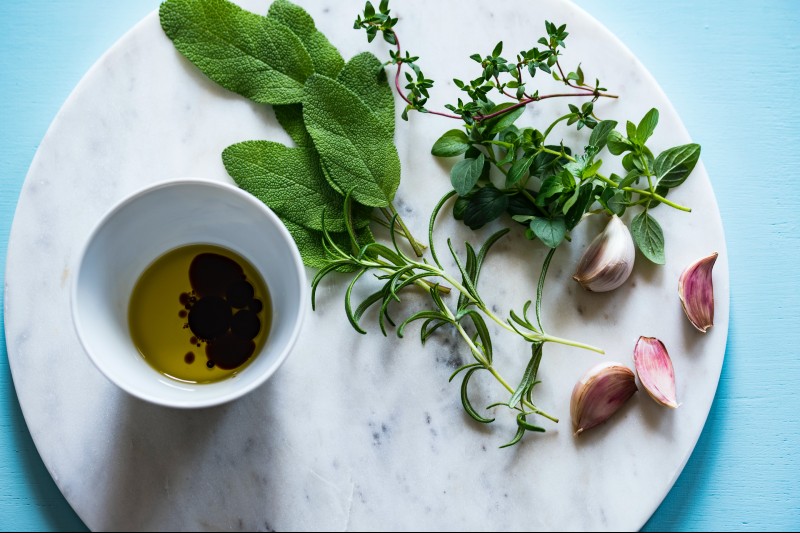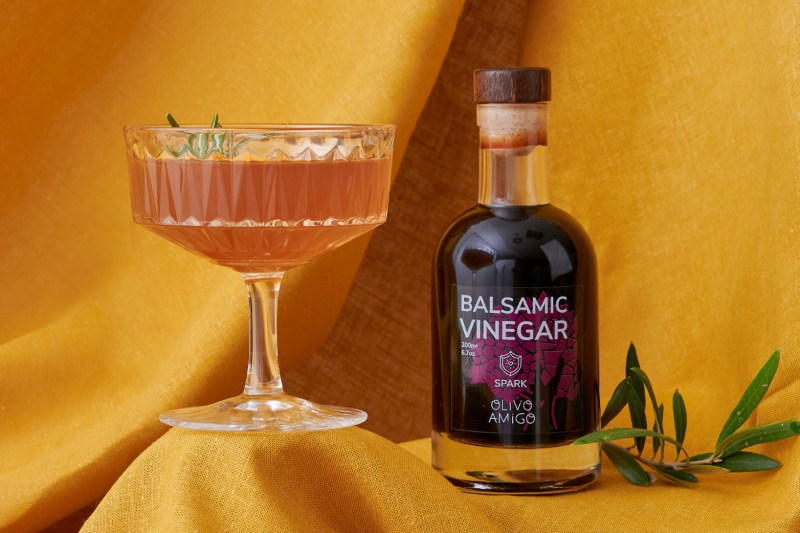Most of us don’t know how to use balsamic vinegar. At the very least, we’re under-using it, reserving it for those cool dark drops in a bowl of olive oil for bread dipping, and little more. Well, it’s great in a lot of things, even cocktails.
Yes, the cocktail kingdom can take on any number of interesting ingredients, often to great effect. Want proof? Try mixing cocktails with marsala or cocktails with butter. You’ll adore the results. If you’re after a little sweetness and brightness, balsamic vinegar can be utilized in many cocktail recipes too.

By all means, keep adding balsamic vinegar to your favorite pasta sauces, cheeses, and salads. Give it some serious thought when mixing up some cocktails too, whether you’re looking for a different take on a Bloody Mary or something new entirely.
What balsamic vinegar adds
Talk up any good bartender and comb through any good cocktail book and you’ll notice a theme: Balance. That balance comes to fruition thanks to acid, a key ingredient in a good drink. With a lot of the classics, acid comes by way of citrus, but it can show up in other forms too. Balsamic is an ideal acid-bringer.
It also brings additional flavor to the table and can highlight flavors of other ingredients in the drink, such as fruit. With tasting notes often hovering around subtle tartness, cola, and a certain woodiness, you can treat balsamic like a concentrated version of red wine or strong vermouth.
How to use balsamic vinegar
The main takeaway here as that a little balsamic vinegar can go a long way. You rarely need more than a half-ounce of the stuff in most drinks. Just as when you’re cooking with it, a drizzle is often more than enough. A general rule is to use about a third-to-a-half of what you would use if you were using traditional citrus (to taste, of course). It also pretty much never goes bad, provided you keep it sealed and in a relatively dark and cool space. The best-tasting balsamic is often the oldest, aged to perfection.
When considering complementary ingredients, think blackberries, strawberries, tea, and herbs like mint and basil. Consider savory ingredients like celery and cucumber, along with liquid additions such as vermouth. In fact, fellow grape-based liquids tend to work great, such as brandy or wine.
More tips for balsamic vinegar
In addition to the above, balsamic really befriends a few other cocktail ingredients. For one, it does exceptionally well with amaro by playing off the liquor’s bittersweet taste. It also loves to work alongside stone fruit (peaches, plums) and does well with most spirits, especially bourbon, vodka, and gin.
Because you’re only using so much of balsamic, we suggest forking over a little more cash for the higher-end sort. You’ll appreciate the added character and complexity. When buying balsamic, look for authenticity, namely the term “Aceto Balsamico Tradizionale.” Balsamic from Modena is prized, but it doesn’t necessarily have to come from the famed balsamic-producing Italian town. Look for the D.O.P certification on the label, or I.G.P. for vinegar that’s nearly as good and likely more readily available at most stores.
Balsamic is also great for adding accents to a drink, whether it’s a few cool-looking droplets to top a drink or mixing in to add some deep color.
Check out a few recipes below for more ideas.
Balsamic Cooler
This balsamic vinegar cocktail calls on hibiscus and bergamot. Even better, if you’re doing Dry January, it’s a mocktail (just sub in traditional rosé wine for a boozy take).
Ingredients
- 3 ounces chilled hibiscus tea
- 3/4 ounce earl grey tea syrup
- 1/2 ounce Carandini Emilio Balsamic Vinegar of Modena IGP
- Nonalcoholic sparkling rosé wine
Method
- Build the drink over cracked ice in a medium-sized wine glass.
- Top with NA sparkling rosé wine.
- Give a light stir and garnish with grapefruit oils.
- Discard the peel.
Olivo Strawberry Spark

Here, balsamic works alongside strawberries, citrus, and some herbs for a tasty sipper.
Ingredients
• 2 ounces preferred vodka
• 1/2 ounce lemon juice
• 1/2 ounce honey or unflavored syrup
• 1/2 teaspoon Olivo Amigo Spark balsamic vinegar
• 2–3 diced strawberries
• 1 small bunch mint or basil
Method
- Add diced strawberries to a cocktail shaker and muddle with a twisting motion to extract the juice from the strawberries.
- Add the rest of the ingredients to the shaker and shake eight to 10 times.
- Pour the cocktail into a glass filled with ice and garnish with a slice of lemon, strawberry, and mint or basil.
Balsamic Sour
Gin combined with citrus, celery, and the bright punch of grapefruit makes this a delicious sour cocktail.
Ingredients
- 1 1/2 ounces Apostoles Gin
- 3/4 ounce fresh lemon juice
- 1/2 ounce celery seed syrup
- 1/2 ounce grapefruit sherbet
- 1/2 ounce Cascabel Chili Infused-Balsamic Vinegar of Modena
- 1 dash chocolate bitters
Method
- Add all ingredients into the smaller shaker tin.
- Fill with cubed ice and shake vigorously for 20 seconds.
- Fine-strain the liquid from the ice using a mesh strainer and hawthorne strainer into a coupette glass.


